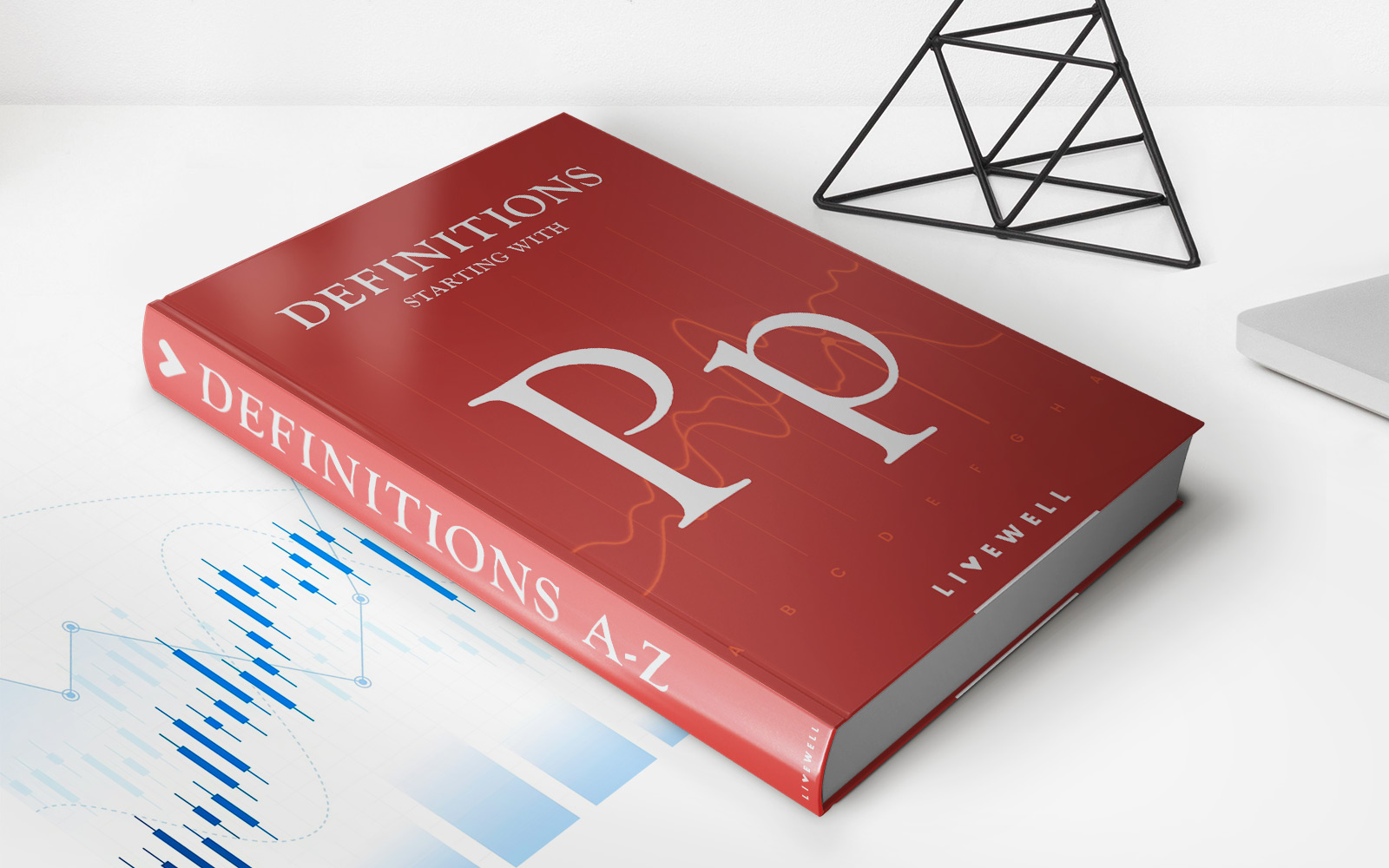

Finance
Why Would A Credit Card Lower My Limit
Modified: March 10, 2024
Learn why a credit card may lower your limit and how it affects your finances. Understand the reasons behind these decisions and how to manage them effectively.
(Many of the links in this article redirect to a specific reviewed product. Your purchase of these products through affiliate links helps to generate commission for LiveWell, at no extra cost. Learn more)
Table of Contents
- Introduction
- Understanding Credit Card Limits
- Factors That May Cause a Credit Card Limit Decrease
- Change in Creditworthiness
- High Credit Utilization Ratio
- Late Payments or Defaulting on Other Credit Accounts
- Negative Changes in Financial Situation
- Fraudulent Activity or Suspicious Transactions
- Inactivity on the Account
- Issuer’s Internal Policies or Risk Management Strategies
- How a Decreased Credit Card Limit Affects Borrowers
- Tips for Avoiding Credit Card Limit Decreases
- Conclusion
Introduction
Having a credit card can provide convenience, flexibility, and the ability to make purchases even when you may not have the cash on hand. However, credit cards also come with certain limits on the amount of money you can borrow. These limits are set by the card issuer and can vary based on a range of factors, including your creditworthiness, income, and financial history.
While it’s common for credit card limits to stay consistent or even increase over time as you establish a positive payment history, there may be instances where you notice a decrease in your credit card limit. This sudden decrease can come as a surprise and leave you wondering why it has occurred.
In this article, we will explore the factors that may cause a credit card limit decrease and provide insights into how you can avoid such a situation. By understanding why a credit card issuer would lower your credit limit, you can take steps to prevent it from happening and protect your financial well-being.
Understanding Credit Card Limits
Before delving into the reasons why a credit card limit may be lowered, let’s first understand what a credit card limit is and how it is determined. A credit card limit is the maximum amount of money that you can charge to your credit card. It serves as a safeguard to prevent cardholders from racking up excessive debt. When you apply for a credit card, the issuer assesses your creditworthiness and sets a limit based on factors such as your credit score, income, and existing debts.
Credit card limits can vary greatly from person to person. For individuals with excellent credit and stable income, the credit limit is often higher, providing more flexibility in making larger purchases. On the other hand, those with limited credit history or lower income may receive a lower credit limit initially, which can be increased over time with responsible credit management.
It’s important to note that your credit limit is not a reflection of the amount of money you can afford to repay; rather, it is determined by the card issuer’s evaluation of your creditworthiness. Your credit utilization ratio, which is the percentage of your available credit that you are currently using, also plays a role in determining your creditworthiness. Generally, a lower credit utilization ratio is preferable as it demonstrates responsible credit management.
Now that we have a basic understanding of credit card limits, let’s explore the factors that may lead a credit card issuer to decrease the limit on your account.
Factors That May Cause a Credit Card Limit Decrease
There are several reasons why a credit card issuer may choose to decrease your credit card limit. It’s essential to be aware of these factors to understand why your limit may be lowered and take appropriate actions to prevent it. Here are some common reasons:
- Change in Creditworthiness: If your creditworthiness has declined since you first obtained the credit card, perhaps due to missed payments or increased credit utilization, the card issuer may decide to reduce your credit limit. This is because they perceive you as a higher credit risk and want to limit potential losses.
- High Credit Utilization Ratio: When you consistently utilize a large portion of your available credit, it can raise concerns for the card issuer. A high credit utilization ratio indicates a reliance on credit and may indicate financial strain. As such, they may reduce your credit limit to mitigate their risk.
- Late Payments or Defaulting on Other Credit Accounts: If you have a history of late payments or have defaulted on other credit accounts, it can negatively impact your creditworthiness. The card issuer may lower your credit limit as a proactive measure to minimize their exposure to the risk of non-payment.
- Negative Changes in Financial Situation: Significant changes in your financial situation, such as a loss of income or a job change, can raise concerns for the card issuer. They may perceive these changes as increasing your credit risk and therefore choose to lower your credit limit.
- Fraudulent Activity or Suspicious Transactions: If your credit card has been involved in fraudulent activity or if suspicious transactions have been detected, the card issuer may temporarily lower your credit limit as a security measure while they investigate the issue to protect both you and themselves.
- Inactivity on the Account: If you have not used your credit card for an extended period, the card issuer may decide to lower your credit limit. This is because an inactive account provides less value to the issuer, and they may choose to allocate credit to more active customers.
- Issuer’s Internal Policies or Risk Management Strategies: Credit card issuers may periodically review and adjust credit limits as part of their risk management strategies or company policies. These adjustments can be made in response to changing economic conditions, shifts in the credit market, or other internal considerations.
It’s important to remember that each credit card issuer has its own criteria and policies regarding credit limit adjustments. Therefore, it’s recommended to check the terms and conditions of your specific credit card agreement for more details.
Change in Creditworthiness
One of the most common reasons for a credit card limit decrease is a change in creditworthiness. Your creditworthiness is determined by factors such as your credit score, payment history, and overall financial health. If there has been a decline in your creditworthiness since you initially obtained the credit card, the card issuer may choose to decrease your credit limit as a precautionary measure.
The card issuer closely monitors your payment behavior and credit utilization ratio, among other factors. If you have missed payments, defaulted on other credit accounts, or accumulated high levels of debt, it can negatively impact your creditworthiness. These actions indicate a higher risk of defaulting on credit payments, which poses a risk to the card issuer.
If you notice a decrease in your credit limit and suspect that it may be due to a change in creditworthiness, it’s crucial to review your credit report and credit score. You can obtain a free copy of your credit report from each of the three major credit bureaus (Equifax, Experian, and TransUnion) once a year. Reviewing this report will help you identify any negative marks or discrepancies that may have contributed to the decrease in your creditworthiness.
To improve your creditworthiness and potentially prevent further credit limit decreases, focus on making all your credit payments on time, reducing your credit utilization ratio, and addressing any negative items on your credit report. This may involve paying off outstanding balances, disputing inaccuracies, or seeking professional credit counseling if needed.
Remember that rebuilding your credit takes time and consistent effort. By demonstrating responsible credit behavior, you can gradually improve your creditworthiness and potentially regain a higher credit limit.
High Credit Utilization Ratio
Another factor that may cause a credit card limit decrease is a high credit utilization ratio. Your credit utilization ratio refers to the percentage of your available credit that you are currently using. It is calculated by dividing your total credit card balances by your total credit limits.
A high credit utilization ratio can indicate financial strain or an increased reliance on credit. If the card issuer notices that you consistently utilize a significant portion of your available credit, they may view it as a potential risk. This is because a high credit utilization ratio suggests that you may be relying too heavily on credit and may have difficulty repaying your debts.
As a general rule of thumb, it is recommended to keep your credit utilization ratio below 30%. Lower ratios are even better, as they demonstrate responsible credit management and financial stability. If your credit utilization exceeds this threshold, it may be a red flag to the card issuer and could result in a decreased credit card limit.
If you find that your credit utilization ratio is high, there are several steps you can take to reduce it and potentially prevent a credit card limit decrease:
- Pay down balances: Focus on paying off your credit card balances to decrease your overall credit utilization ratio.
- Request a credit limit increase: Contact your credit card issuer and request a credit limit increase. This can help lower your credit utilization ratio, provided you do not increase your spending.
- Use multiple credit cards: If you have multiple credit cards, consider spreading your balances across them to lower the utilization ratio on individual cards.
- Limit new credit applications: Avoid applying for new credit cards or loans, as they can increase your overall credit utilization ratio.
- Monitor your credit usage: Regularly review your credit card statements and keep track of your credit utilization ratio to ensure it remains within a healthy range.
By actively managing your credit utilization ratio and keeping it low, you can demonstrate responsible credit behavior and potentially avoid a credit card limit decrease.
Late Payments or Defaulting on Other Credit Accounts
Late payments or defaulting on other credit accounts can have a significant impact on your creditworthiness and may be a factor in a credit card limit decrease. Card issuers closely monitor your payment history and use it to assess your creditworthiness and level of risk as a borrower.
If you consistently make late payments or default on other credit accounts, it signals to the card issuer that you may have difficulty managing your debts. This raises concerns about your ability to repay the credit card debt, which could result in a decreased credit card limit as a precautionary measure.
When you make late payments or default on other credit accounts, it negatively affects your credit score. Your credit score is an important indicator of your creditworthiness, and a lower score can lead to a decreased credit limit. Late payments and defaults can stay on your credit report for several years, impacting your creditworthiness and ability to obtain credit in the future.
To prevent late payments or defaulting on other credit accounts, it is crucial to practice responsible financial management:
- Create a budget: Establish a budget that allows you to properly allocate funds for your monthly obligations, including credit card payments and other debts.
- Set up payment reminders: Utilize payment reminders or automate your payments to ensure that they are made on time.
- Negotiate with creditors: If you are struggling to make payments on your other credit accounts, consider reaching out to your creditors to explore options such as payment plans or debt restructuring.
- Seek professional help: If you find yourself overwhelmed by debt or unable to manage your payments, consider seeking assistance from a credit counseling agency or financial advisor who can provide guidance and help you create a plan to regain control of your finances.
By prioritizing timely payments, managing your debts responsibly, and addressing any issues with existing credit accounts, you can work towards maintaining a positive payment history and potentially avoid a credit card limit decrease.
Negative Changes in Financial Situation
A credit card limit decrease may also occur if there are negative changes in your financial situation. Card issuers carefully monitor the financial health of their cardholders to assess their creditworthiness and determine the level of risk associated with extending credit.
If there have been significant changes in your financial situation, such as a loss of income, a job change, or a decline in your overall financial stability, the card issuer may view you as a higher credit risk. In response, they may choose to lower your credit card limit as a precautionary measure to reduce their exposure to potential non-payment.
These negative changes in your financial situation can raise concerns about your ability to repay your credit card debt. For example, if you have recently experienced a decrease in income or are facing financial difficulties, it may be more challenging to meet your financial obligations, including credit card payments.
If you find yourself in this situation and want to prevent a credit card limit decrease, consider taking the following steps:
- Communicate with the card issuer: Reach out to your credit card issuer and explain the negative changes in your financial situation. They may be willing to work with you to find a feasible solution, such as adjusting your payment terms or offering a temporary payment arrangement.
- Create a revised budget: Assess your new financial situation and create a revised budget that reflects your current income and expenses. This will help you manage your finances more effectively and prioritize your credit card payments.
- Explore debt consolidation or refinancing: If you have multiple credit card debts and are struggling to manage them, consider consolidating or refinancing your debts to simplify your payments and potentially lower your interest rates.
- Seek financial advice: Consider consulting with a financial advisor or credit counselor who can provide guidance on managing your finances during difficult times and help you develop a plan to regain stability.
By taking proactive steps to address negative changes in your financial situation and communicate with your credit card issuer, you may be able to prevent a credit card limit decrease and find a solution that works for both parties.
Fraudulent Activity or Suspicious Transactions
A credit card limit decrease may occur if your card has been involved in fraudulent activity or if suspicious transactions have been detected. Card issuers have robust security systems in place to detect and prevent fraud, and they take any signs of unauthorized activity very seriously.
If fraudulent activity is suspected on your credit card account or if certain transactions appear suspicious, the card issuer may temporarily lower your credit limit as a precautionary measure. This is done to protect both you and the card issuer from potential financial losses and to allow for a thorough investigation of the situation.
The card issuer may reach out to you to verify questionable transactions or provide additional information to confirm your identity. They may also place a hold on your card until the issue is resolved, which can temporarily limit your access to credit.
If you suspect fraudulent activity on your credit card or notice any unauthorized transactions, it’s crucial to take immediate action:
- Contact the card issuer: Immediately notify your card issuer about the suspicious activity or unauthorized transactions. They will guide you on the next steps to resolve the issue and protect your account.
- Review your statements: Regularly review your credit card statements and online account activity to identify any unfamiliar transactions. Report any discrepancies to the card issuer right away.
- Update security measures: Ensure that your credit card has secure passwords and that you regularly update them. This adds an extra layer of protection against fraudulent activity.
- Monitor your credit report: Keep a close eye on your credit reports from the major credit bureaus to detect any unauthorized accounts or inquiries.
- Consider fraud protection services: If you frequently use your credit card for online transactions, consider enrolling in additional fraud protection services offered by your card issuer to enhance security.
By promptly reporting any fraudulent activity or suspicious transactions and working closely with your card issuer, you can help protect your credit card account and potentially prevent a credit card limit decrease.
Inactivity on the Account
Inactivity on a credit card account can also be a reason for a credit card limit decrease. When cardholders do not use their credit cards for an extended period, it provides less value to the card issuer. In such cases, the card issuer may choose to lower the credit limit on the account.
Credit card issuers often monitor account activity and consider the profitability of each customer. If you have not used your credit card for a prolonged period, there is a chance that the card issuer may view your account as less profitable and decide to decrease your credit limit.
Reducing credit limits on inactive accounts allows the card issuer to allocate credit to more active cardholders who actively use and contribute to the profitability of their credit products. This practice also helps the card issuer manage their risk and ensure that credit limits are aligned with the customers’ current credit needs and financial behavior.
To prevent a credit card limit decrease due to inactivity, consider the following actions:
- Use your credit card regularly: Make small, regular purchases on your credit card and pay off the balance in full each month. This activity demonstrates responsible use and helps keep your card active.
- Set up automatic payments: Link your credit card to recurring bills or subscriptions to ensure that there is regular activity on the account.
- Keep track of expiration dates: Be mindful of the expiration dates on your credit cards. If a card is about to expire, request a replacement to avoid any gaps in activity that may result in a credit limit decrease.
- Review and understand the card issuer’s policies: Familiarize yourself with the terms and conditions of your credit card agreement. This will help you understand any specific requirements or policies regarding account activity and credit limit adjustments.
By regularly using your credit card and keeping it active, you can demonstrate to the card issuer that your account is valuable and potentially avoid a credit card limit decrease due to inactivity.
Issuer’s Internal Policies or Risk Management Strategies
Another factor that may lead to a credit card limit decrease is the issuer’s internal policies and risk management strategies. Credit card issuers often have guidelines and practices in place to manage their overall risk exposure and ensure the financial health of their cardholders.
These internal policies and strategies may include periodic reviews of credit limits, reassessment of customer creditworthiness, or adjustments based on changing economic conditions. Card issuers continuously evaluate the risk associated with each customer and may make adjustments to credit limits as necessary to mitigate any potential risks.
These adjustments can be influenced by factors such as fluctuations in the credit market, changes in the issuer’s risk appetite, or adjustments to their overall portfolio risk. They are not necessarily a reflection of your creditworthiness or financial behavior but rather part of the issuer’s broader risk management practices.
Timely communication from the card issuer is crucial in helping you understand any changes in credit limits due to internal policies or risk management strategies. If you receive a notice about a credit card limit decrease, it is recommended to reach out to the issuer for additional information and clarification. This will allow you to better understand the reasoning behind the adjustment and address any concerns you may have.
While you may not have direct control over the issuer’s internal policies or risk management strategies, there are steps you can take to minimize the impact:
- Maintain a good credit history: By making timely payments, keeping your credit utilization low, and managing your debts responsibly, you can increase your creditworthiness and potentially reduce the likelihood of a credit limit decrease.
- Regularly review your credit reports: Monitor your credit reports from the major credit bureaus for any discrepancies or errors that may negatively impact your creditworthiness. Dispute any inaccuracies promptly to ensure that your credit information is up-to-date and accurate.
- Communicate with the card issuer: If you have concerns about a credit limit decrease or need clarification on the issuer’s policies, reach out to the card issuer directly. They may be able to provide additional insights or work with you to find a suitable solution.
Understanding the issuer’s internal policies and risk management strategies can help you navigate any potential credit card limit decreases and proactively manage your credit relationship with the issuer.
How a Decreased Credit Card Limit Affects Borrowers
A decreased credit card limit can have several implications for borrowers. Understanding these effects will help you navigate the situation and take appropriate steps to manage your finances effectively. Here are some ways in which a decreased credit card limit can impact you:
- Reduced Available Credit: A lower credit card limit means that you have less available credit to utilize for purchases and emergencies. It may restrict your ability to make larger purchases or manage unexpected expenses.
- Higher Credit Utilization Ratio: With a decreased credit card limit, maintaining the same level of spending can result in a higher credit utilization ratio. This can negatively impact your credit score and creditworthiness.
- Impact on Credit Score: A decreased credit limit can lead to a higher credit utilization ratio, which is a significant factor in determining your credit score. If your credit utilization ratio exceeds the recommended threshold of 30%, it can have a negative impact on your credit score.
- Potential Negative Impression: Lenders and creditors may view a decreased credit card limit as a sign of increased risk or financial strain. This could affect their willingness to extend new credit or offer favorable loan terms in the future.
- Adjustment of Spending Plans: A reduced credit card limit may require you to adjust your spending habits and prioritize essential expenses. It is essential to reassess your budget and make any necessary changes to accommodate the lower credit limit.
- Monitoring Credit Utilization: With a lower credit card limit, it becomes even more critical to monitor your credit utilization closely. Keeping your utilization ratio low by managing your spending habits will help maintain a healthy credit profile.
To mitigate the impact of a decreased credit card limit, consider taking the following actions:
- Pay Down Balances: By reducing your outstanding balances, you can lower your credit utilization ratio and potentially improve your creditworthiness.
- Explore Credit Limit Increase: Contact your credit card issuer to inquire about the possibility of a credit limit increase. Ensure that you meet the required criteria for an increase, such as a good payment history and consistent income.
- Consider Alternative Credit Options: If your credit limit decrease significantly impacts your borrowing ability, explore alternative credit options such as personal loans or secured credit cards.
- Focus on Building Credit: Strengthening your credit profile by making on-time payments, keeping debts manageable, and diversifying your credit mix will help improve your creditworthiness over time.
Remember, a decreased credit card limit is not a reflection of your financial worth or abilities. It is essential to adapt to the situation, implement prudent financial practices, and maintain open communication with your credit card issuer to manage the impact effectively.
Tips for Avoiding Credit Card Limit Decreases
While credit card limit decreases may sometimes be unavoidable, there are proactive steps you can take to minimize the likelihood of experiencing a decrease. By adopting these strategies, you can maintain a healthy credit card relationship with your issuer and protect your creditworthiness. Here are some tips for avoiding credit card limit decreases:
- Monitor your credit utilization ratio: Keep your credit utilization ratio below 30% by managing your spending and paying off balances regularly. This shows responsible credit usage and lowers the risk that your card issuer perceives.
- Make timely payments: Stay current on all your credit card payments and avoid any late or missed payments. Consistently paying on time demonstrates reliability and financial responsibility to your card issuer.
- Communicate with your card issuer: Maintain open lines of communication with your card issuer. If you anticipate a decrease in income or other financial changes, inform them in advance. They may be able to suggest options to help you maintain your current credit card limit.
- Regularly review your credit reports: Stay vigilant by monitoring your credit reports for errors or inaccuracies. Dispute any discrepancies promptly to ensure that your credit information is accurate and up-to-date.
- Avoid maxing out your credit cards: Maxing out your credit cards can raise concerns for your card issuer and negatively impact your credit utilization ratio. Aim to keep your balances well below your credit limits.
- Use your credit card regularly: Maintain regular activity on your credit card by making small, regular purchases and paying them off in full each month. This showcases responsible usage and demonstrates to your card issuer that you actively manage your credit.
- Build a positive credit history: Focus on building a strong credit history by establishing good credit habits early on. This includes responsibly managing all of your credit accounts and maintaining a diverse mix of credit types.
- Consider a credit limit increase: If you’ve demonstrated responsible credit usage and maintained a good payment history, you can request a credit limit increase from your card issuer. This can provide you with a higher limit, reducing the chances of a decrease.
- Stay informed about your card issuer’s policies: Familiarize yourself with your card issuer’s terms and conditions. Understand their policies regarding credit limit adjustments, credit utilization, and minimum activity requirements.
Remember, while you can take steps to minimize the likelihood of a credit card limit decrease, factors beyond your control may still come into play. By practicing responsible credit management and maintaining good communication with your card issuer, you can protect your creditworthiness and increase the chances of a positive credit card experience.
Conclusion
Credit card limit decreases can occur for various reasons, and it’s essential to understand why they happen and how to prevent them. Factors such as changes in creditworthiness, high credit utilization ratio, late payments or defaulting on other credit accounts, negative changes in financial situation, fraudulent activity or suspicious transactions, inactivity on the account, and issuer’s internal policies or risk management strategies can all contribute to a credit card limit decrease.
While some factors, such as internal policies and market conditions, may be beyond your control, there are proactive steps you can take to minimize the likelihood of a credit card limit decrease. These include monitoring your credit utilization ratio, making timely payments, communicating with your card issuer, reviewing credit reports regularly, avoiding maxing out credit cards, using your credit card regularly, building a positive credit history, considering a credit limit increase, and staying informed about your card issuer’s policies.
It’s crucial to understand the potential impact of a decreased credit card limit. It can result in reduced available credit, higher credit utilization ratio, negative effects on your credit score, potential negative impression on lenders, adjustments to spending plans, and a need for closer monitoring of credit utilization. By following the tips and strategies outlined in this article, you can navigate the situation effectively and minimize the consequences of a credit card limit decrease.
Remember to stay proactive, maintain open lines of communication with your card issuer, and practice responsible credit habits. By doing so, you can protect your creditworthiness, maintain a healthy credit card relationship, and ensure your financial stability in the long run.














